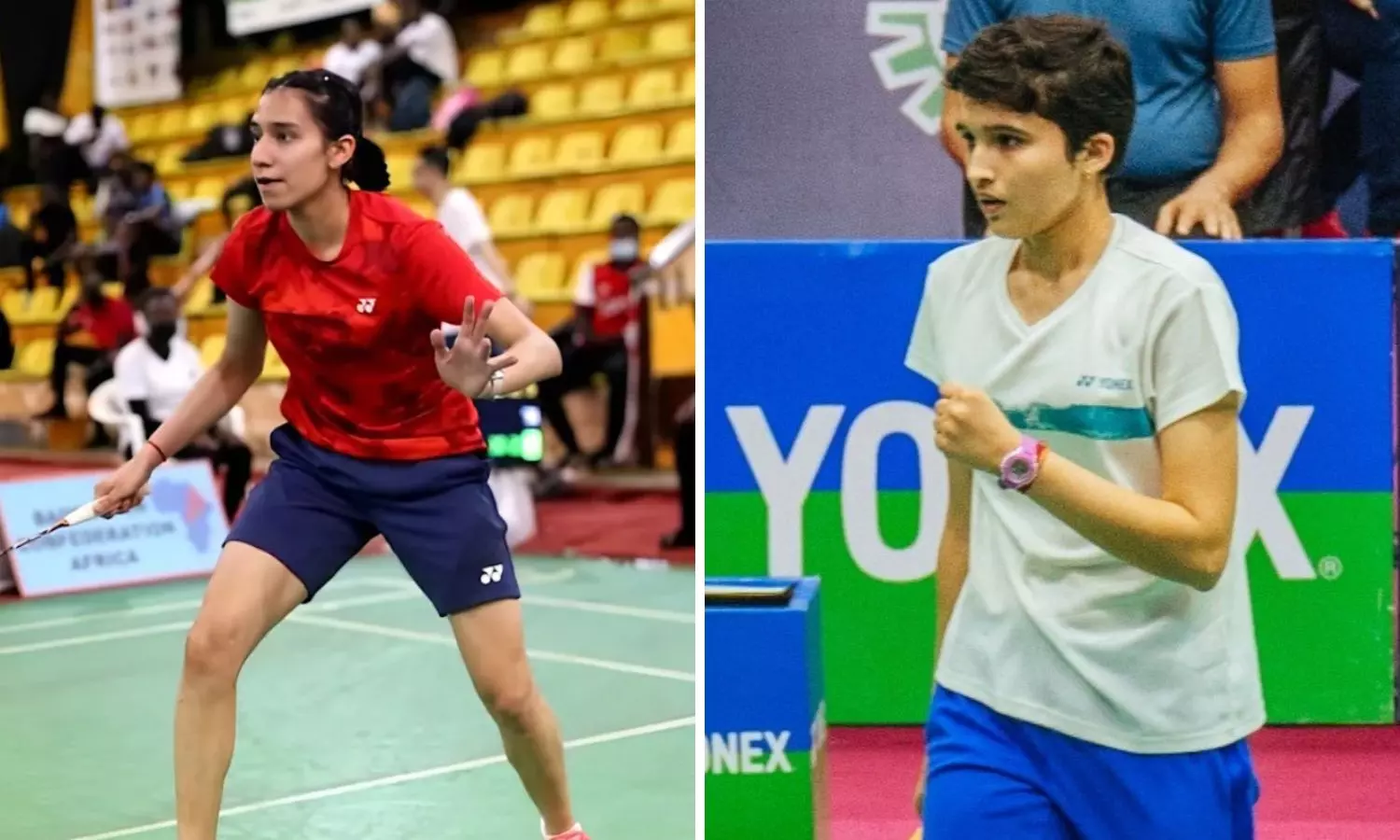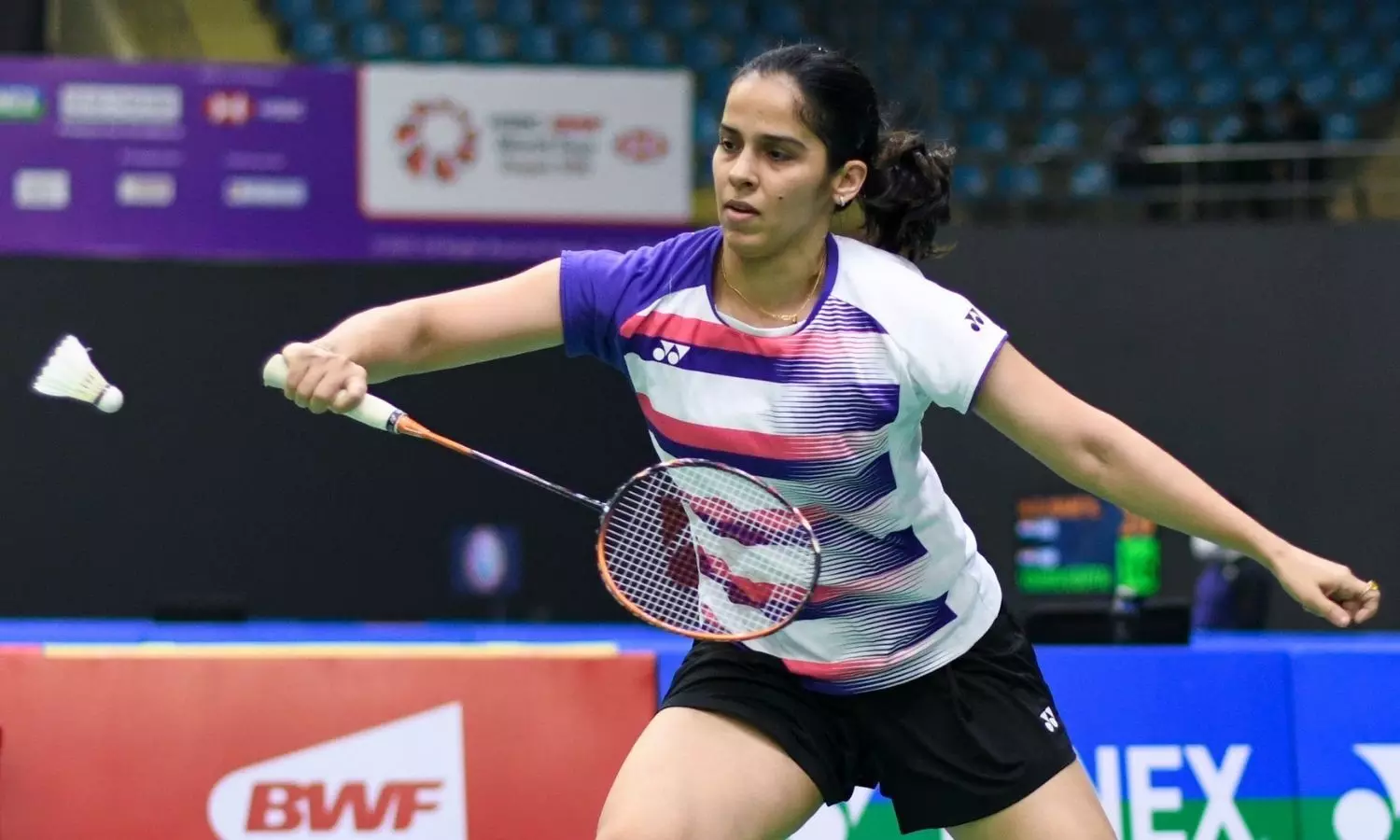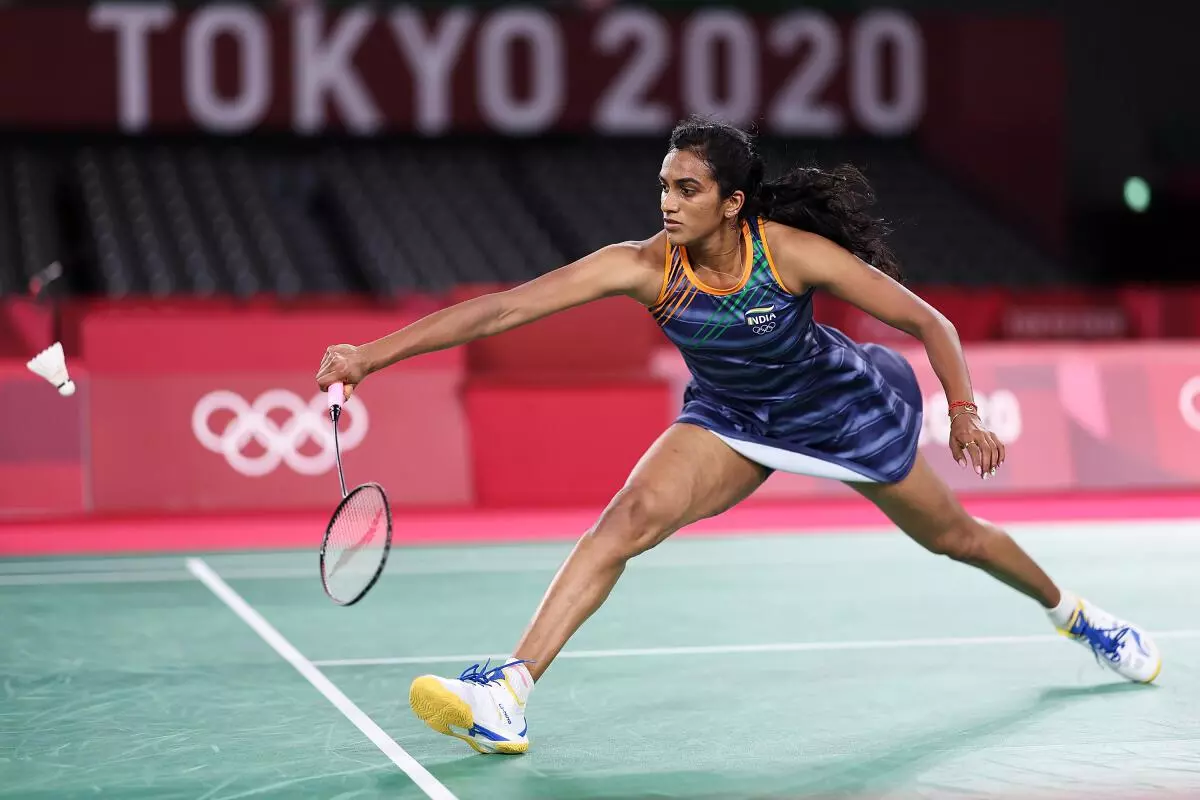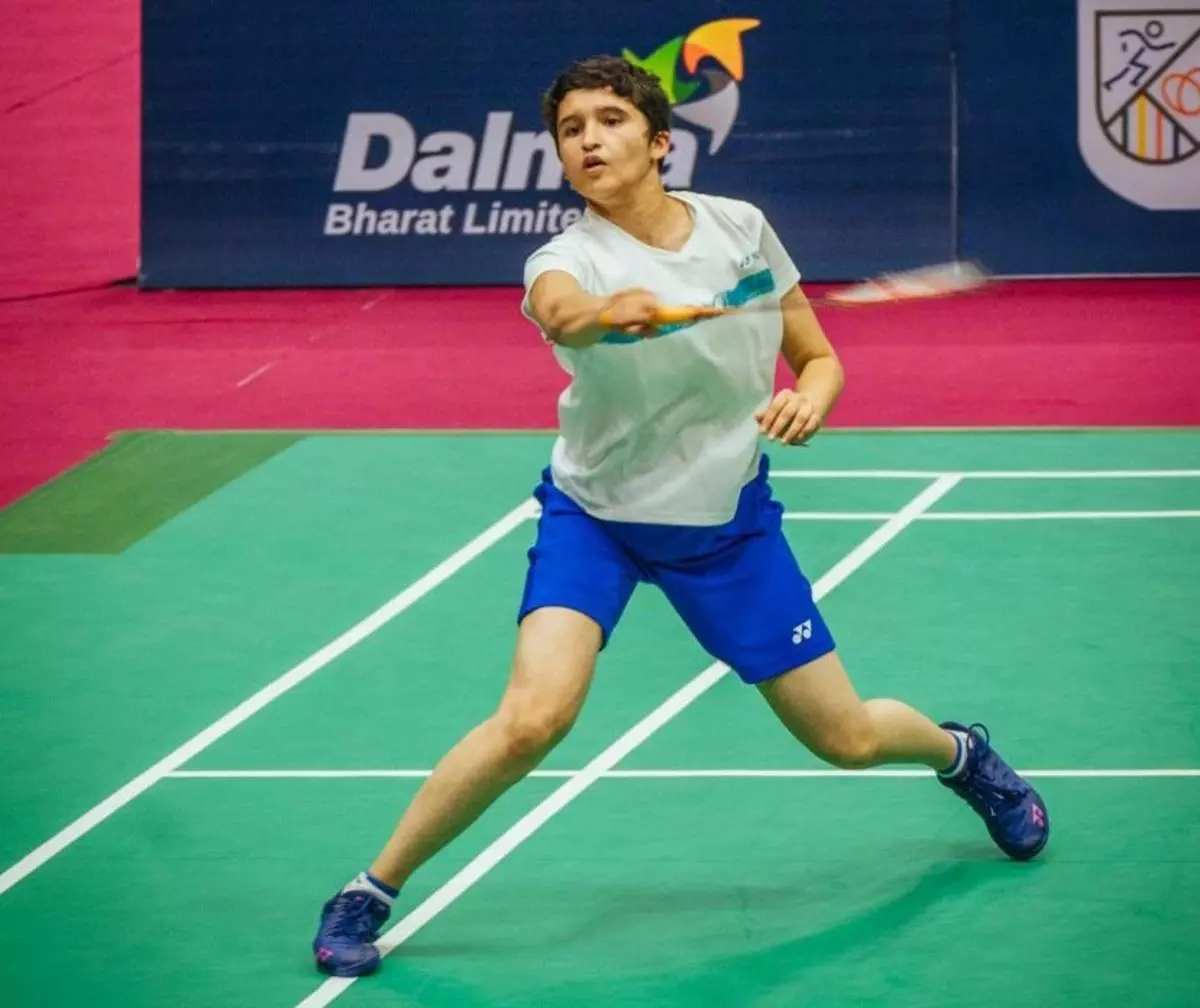Badminton
Why the question of who after Saina and Sindhu continue to linger in Indian badminton
As Indian badminton looks for its next women's singles star, the question of who would fill the big shoes of Saina and Sindhu continues to linger in the country's badminton circle.

Anupama Upadhyaya and Unnati Hooda are two of India's promising women's singles players.
In the thick of the COVID-19 pandemic in 2020, Pullela Gopichand, the doyen of Indian badminton, was addressing an audience infested with book readers at the Tata Steel Literary Meet in Kolkata.
It was obvious for him to counter the most obvious question of how he managed two generational players of Indian badminton - Saina Nehwal and PV Sindhu.
"It was tough coaching Sindhu and Saina together. Each one’s journey is very different, each of the champions is very different," Gopichand had said.
Gopichand is unequivocally the man behind the ascendancy of two of badminton's greatest players, Saina and Sindhu, and their attainment of iconic status in world badminton.
The two players - who appeared in the international arena at a transitional phase of each other's career - not only defined an aura for Indian badminton but also set a high benchmark for the next generation of Indian shuttlers.
How Gopichand groomed Saina and Sindhu and made two warhorses out of the shy girls is a template that can be taken into use to mould the future generation of Indian women's singles players.
Saina and Sindhu broke free from the shackles of fear and timidity. They were aggressive and expressed themselves to the world with their outstanding games, a mix of two styles - brute power and deceptions.

Badminton, at its highest level, resembles ballet dancing. For any player to compete at the highest level - BWF World Tour, they require sheer control over the shuttle, strength, mind-play, and measured movement.
To make Saina and Sindhu adapt to such a rigid system, Gopichand put them through a military-like regime where their sleep, diet, and training were tailor-made and controlled.
There was no respite. No entertainment. The use of mobile phones was restricted to a mere few minutes. The mind and body of the players were conditioned for badminton. The energy was channelled to only one goal, which is dominating the world and achieving success.
Saina, a mighty player who has unleashed her brute power in smashes and deceived opponents with her uncanny movement, left an enchanting legacy, dismantling the Chinese monopoly and paving the way for the rise of Indian badminton.
Sindhu, on the other hand, taking that further, stomped around the world with her power smashes and magnificent reach that spelt doom for her opponents.
Gopichand, an All England Open champion turned thinking coach, groomed them into two most fared players from India. Their movement on the court was swift, and they commanded the net with great precision.
Saina and Sindhu looked into the eyes of the famed opponents and sent them crashing with mighty smashes. It was so powerful that it left any chance of retrieval.
Heir apparent, search continues!
When they were physically robust and operated like livewires in their courts by elevating their skills with each passing day while achieving milestones for India in a game that is changing almost every week, their heir apparent is yet to be found. The question of who after Saina and Sindhu continues to linger in Indian badminton.
Several names made rounds in recent times. But none has shown the mettle to carry on the legacy of Saina and Sindhu forward.
Simply put, no Indian women's singles player could win a World Tour title, the ultimate level of badminton, since Sindhu, who last won a World Tour title at the Singapore Open in July 2022. No Indian women's singles player has even reached the semifinal or final on the World Tour yet other than Saina and Sindhu.

Ashmita Chaliha, 24, Aakarshi Kashyap, and Malvika Bansod - both are 22 - are yet to develop the bandwidth to stand any chance of winning while competing with the likes of An Se Young, the 21-year-old world no. 1 from South Korea. As they lack tenacity, speed, power, and the killing instinct, they have been simply passengers in front of their better-equipped rivals.
In the past, when Indian players were not physically strong, they tried to get the better of their opponents with a deceptive game, that was their forte. Now even that is missing among India's current set of women's singles players, who made their graduation to the senior level but could not make any impact.
Hence, the question of who would fill the big shoes of Saina and Sindhu has remained unanswered.
The promises
Two players, who have shown promises of making their mark on the World Tour by making progress at the junior level, are Unnati Hooda, 16, and Anupama Upadhyaya, 18.
While India has talented stroke players in Samiya Imad Farooqui and Tasnim Mir, too, the reason why Unnati and Anupama's names stood out is because of their steady rise.
While Anupama, the former world junior no. 1, has recently become the National Games gold medallist in Goa with her deceptive game, a rare quality among the present breed of Indian players, Unnati, the youngest of the lot, has shown phenomenal form by winning Abu Dhabi Masters and Chhattisgarh India International Challenge titles.
Unnati has a game of sheer power, while Anupama has made deception her forte. But they need to elevate their work rate to get the supreme power that would resonate in the thwack of their shuttle and their ability to stay in longer and sapping rallies.
The play should be snappy, with the shuttle moving deep, smashes going flat, and their body moving in sync with the crisscrossing movement of the shuttle. Unnati has embedded power in her game, but she needs to work on her reach. Anupama, on the other hand, in a recent interview with The Bridge, admitted that she has to work on strength.
Both Unnati and Anupama still have age on their side. But one must note that Saina and Sindhu made the hard yards in their 20s to develop a mighty game that intimidated opponents throughout the world.
With their show of strength, reach, and majestic skills, they achieved significant success to mark their rise. Notably, Sindhu was 21 when she won the Olympic silver medal at the Rio Olympics.

To reach that level, Indian youngsters need to corner themselves to training, forgetting about the rest of the world. Nothing else matters to them now except for gaining enormous strength to sustain the rigour of World Tour, whose caravan moves from one city to another every week.
But the concern remains.
Unnati is still training locally in Rohtak under the gaze of his dedicated father Upkar Hooda, a teacher of management studies.
Unnati, who was long expected to expedite her rise given her power, skills, and intent to learn, has been held back due to her second priority, study. She is a brilliant student too. Being hailed from a family of educationists, it is a mandatory drill for her.
Her father has not yet decided where to enrol Unnati after she finishes her board examination.
Anupama, who has recently trained under the gaze of Gopichand at the latter's Hyderabad academy ahead of the Asian Games, has a diligent game. At her best, her game looks like poetry in motion sufficed by her balletic movement, giving her command over the net.
She conjured up the magic against Aditi Bhatt in the final of the 37th National Games with a flick that deceived Bhatt; her stroke flew over the head of her opponent to land in the backcourt.
Anupama, who previously had a training stint with Prakash Padukone Badminton Academy, has recently moved to the National Centre for Excellence in Guwahati to train under famed Korean coach Park Tae-sang.
But, there is a drawback even in her case. It will be her first full-fledged coaching stint after more than a year. She was forced to move back to Delhi in 2022 from Bengaluru due to a family emergency. She trained under her passionate father Naveen for more than a year before making the move to Guwahati.
While Unnati and Anupama are two hopes burning bright, they still need to pack themselves up with power before launching themselves on the ruthless World Tour, where the threat of injury would be of paramount concern and their stamina would be tested time and again.
To sustain the rigour of the World Tour, where success and consistency do not come easily, demands tremendous fitness, mental rigidity, and a game that is sharp and magnificent.
The good thing is that Unnati and Anupama are adamant about physical strength training and loading power to their strokes.
